Even hornets aren’t immune to predation. Many animals and insects feed on hornets from all life stages (from larvae to adults). Here is what eats hornets.
Hornets are popular food for many animals. Hornet predators include birds (scarlet tanagers, purple martins, caracara), flies (satellite flies, cannibalfly), and even other wasps (velvet ants, giant hornets). Mammals also eat hornets, like black bears, badgers, and humans.
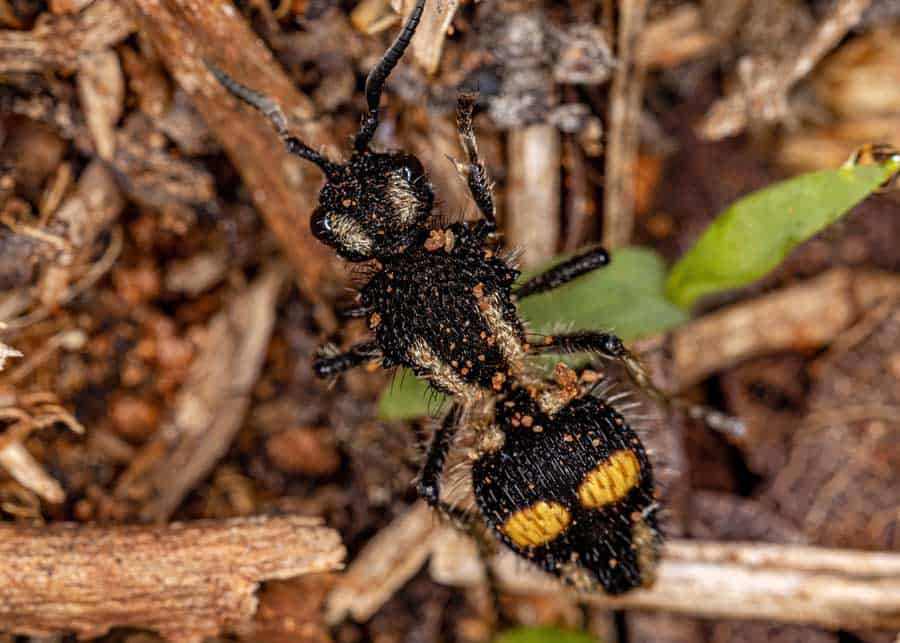
Hornets are a clear winner when it comes to hostile, nuisance insects. In addition to their powerful sting, they tend to get the entire nest involved should they detect a threat.
While hornets are wasps, there are also a unique group of insects. Here is our larger guide to natural wasp predators.
What animals eat hornets?
Table of Contents
10 Hornet Predators
Hornets may seem like the top of their food chain, thanks to their aggressive nature and painful sting, but they are regularly eaten by many insectivorous birds, bugs, and mammals.
Here are ten natural hornet predators:
1. Scarlet Tanagers
Scarlet tanagers are stunning, bright red birds with black wings that call the forests of northern South America home in the winter but flock to the eastern United States during the breeding season.
They are insect foragers and in-flight feeders, seeking prey amongst the deciduous canopies it inhabits.
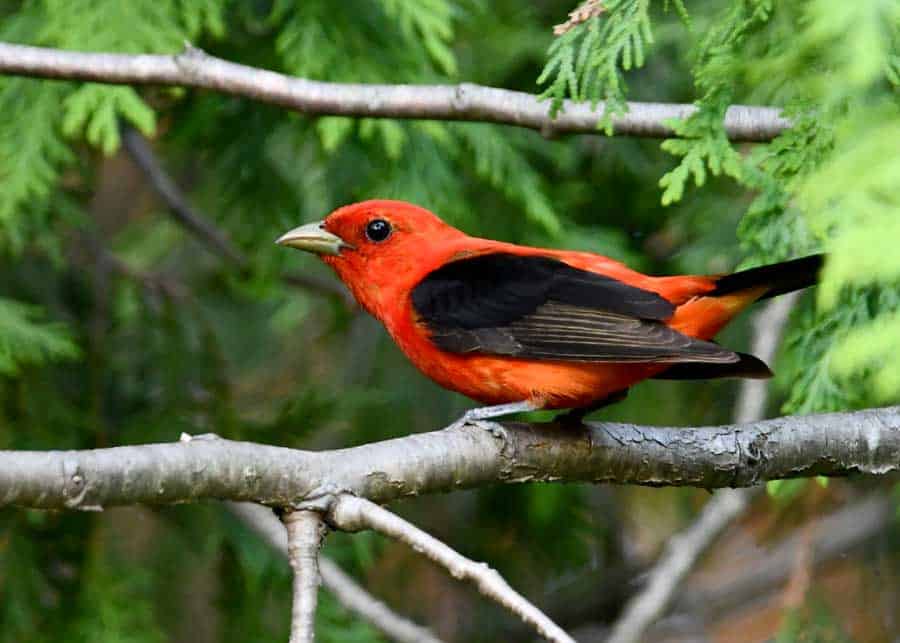
When a scarlet tanager gets its beak on a hornet, it cleverly scrapes the insect against tree bark to rip the stinger out, removing the risk of being stung during consumption.
2. Purple Martins
Purple martins are enthusiastic consumers of flying insects, including hornets.
With its iridescent blue-black feathers and cheerful song, purple martins have long been held in high regard in Native American communities, where tribes used hollowed gourds to attract the bird to the community as natural pest control.
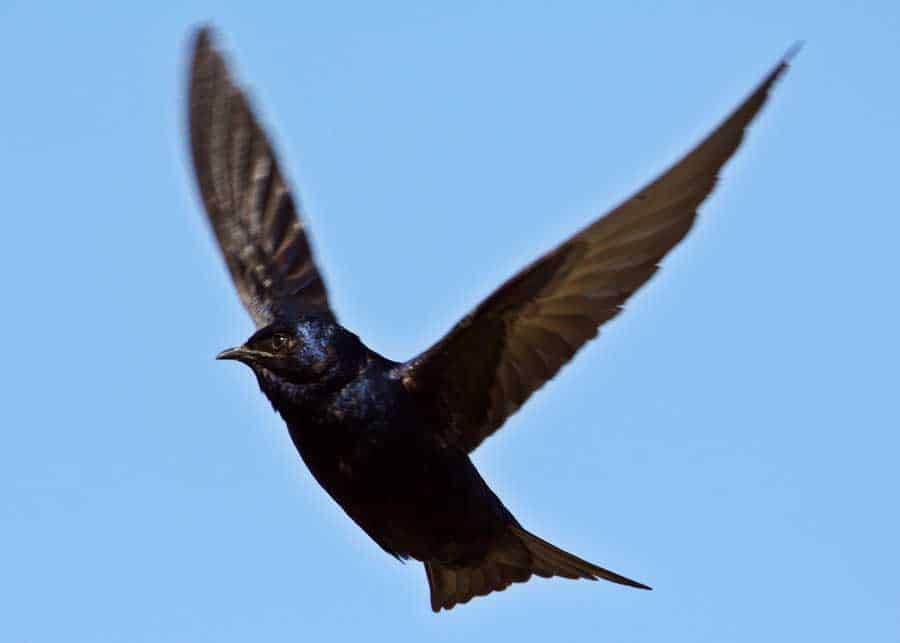
As the largest swallow on the continent, it may be a surprise to see one on the hunt, yet they demonstrate impressive agility and can reach the high speeds necessary to catch their prey.
When they catch sight of a hornet, they use a feeding strategy called hawking, in which they glide from their perch, catch the target in their beak, then return to the same perch to eat.
3. Velvet Ants (Cannibalistic Wasp)
The velvet ant, sometimes referred to as a “cow-killer,” is not an ant but a subspecies of cannibalistic wasp.
They are wingless and covered in a visible coat of bright orange hair, making them a unique entry in the suborder Aprocrita, which also includes yellow jackets and hornets.
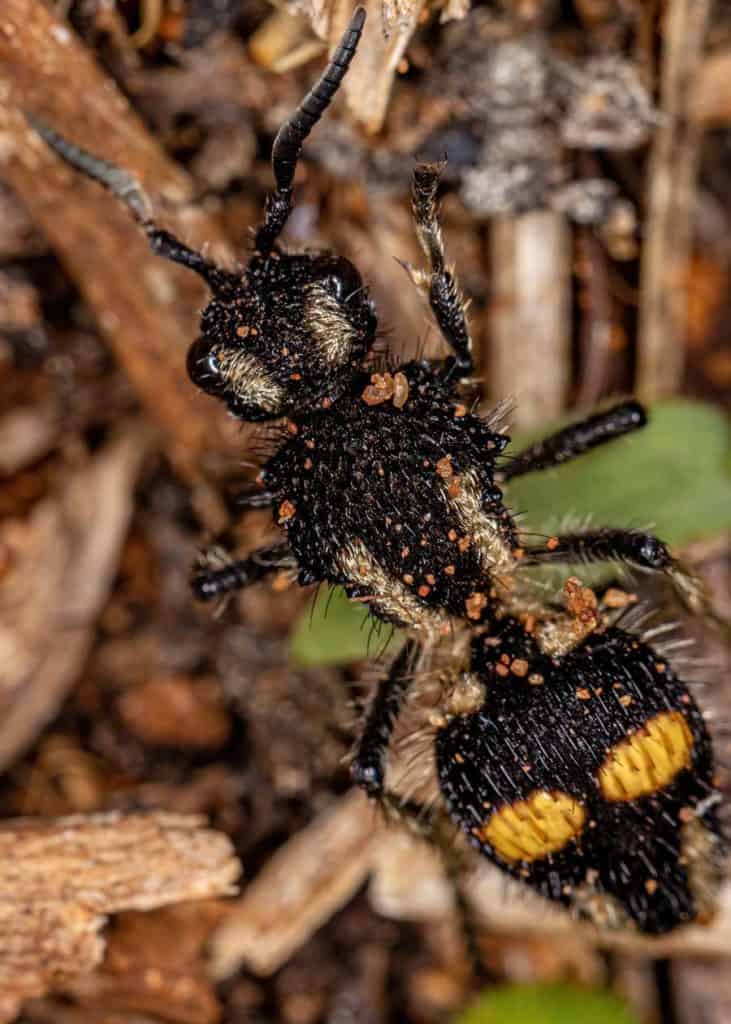
Velvet ants prefer loose, sandy soil, as it is where they can most often find their dietary target: the larvae of ground hornets, also known as cicada killer wasps. The female velvet ants lay their eggs in the nest, where, after hatching, they consume the immature hornets.
If you suspect you have a cicada killer nest in your yard, watch out for velvet ants. While they are not a particularly aggressive species towards humans, the females do have a very painful sting.
4. Giant Asian Hornet (Murder Hornet)
These gigantic hornets are exceptional and brutal hunters. They feed on most insects, including other hornets.
They became famous a few years ago when they began appearing in North America. These giant hornets are known as both Giant Asian Hornets and Giant Japanese Hornets. And they are a formidable hornet predator.
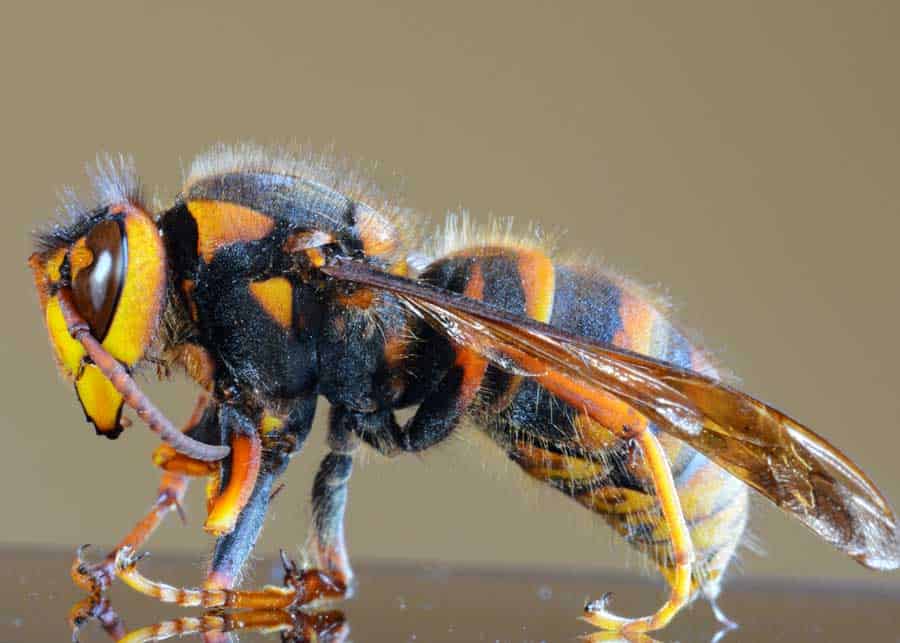
Learn more about giant hornets.
5. Caracara (Curiquingue)
Caracara is known for being wasp-eating machines. They’ll even feed a hornet nest to their young.
We used to see caracara falcons when we lived in southern Ecuador. I wrote about them here.
Here’s a photo I took while driving in the mountains above our home in Santa Isabel, Ecuador.
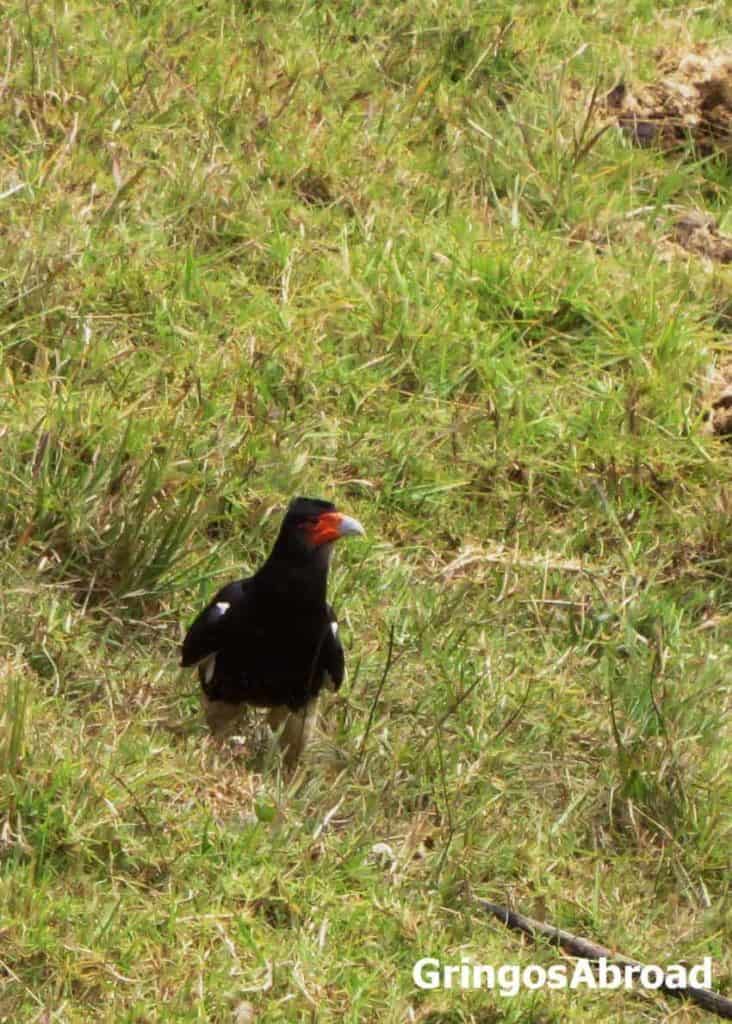
6. Satellite Flies
Satellite flies are kleptoparasites, meaning they obtain their food by stealing it from other insects.
In this case, these arthropods deposit their eggs in hornets’ nests directly on top of the hornet larvae’s food reserves.
After hatching, satellite fly larva makes quick work of the partially chewed insect parts before feasting on the sweet, sticky secretion that the hornet larvae produce.
While they do not directly make a meal of the hornet at any life stage, their kleptoparasitism does affect the number of healthy larvae and removes vital nutrients from the nest.
7. Red-Footed Cannibalfly
This species of robber fly is a voracious cannibal known for performing impressive feats of aerial acrobatics to hunt hornets in mid-flight.
Red-footed cannibalflies typically reach a length of around 1.25-inches and host a bevy of sleek body parts that help them grapple with even the most formidable of weaponized foes.
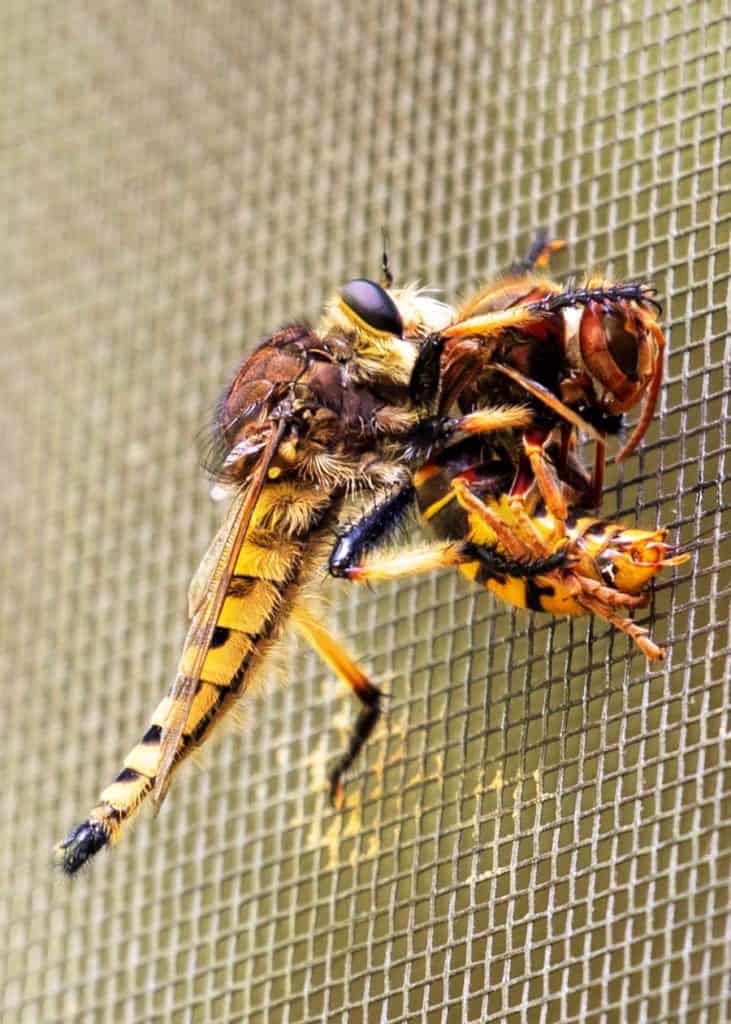
In addition to large, hook-like feet for wrangling hornets, red-footed cannibal flies also have a muscular thorax that allows them to reach incredibly high speeds. They use this talent to smack into the sides of their prey, stunning the insect instantly.
Once stunned, this airborne behemoth injects an enzyme solution into the hornet’s body and drinks out the dissolved organs.
8. Black Bears
Despite their bad reputation as honey fanatics, black bears mainly feast on vegetables, fruit, nuts, seeds, and insects. They are particularly fond of bald-faced and European hornets, which occupy the same North American forests where black bears live.
To get to hornets’ nests, black bears claw their way up tree branches, where they rip away the outer layers of “paper” to get to the comb inside. While they’re happy to munch on the adults that may get in the way, they are indeed after the juicy grubs.
Other species of bears also eat insects, including hornets.
9. American Badger
American badgers are nocturnal, carnivorous relatives of skunks that live across Canada, the United States, and Mexico. Their bodies are built for digging, with short, sturdy legs, long talons, and webbed back feet to make quick work of soil.
One of their favorite foods is ground hornet larva, but they’ll make quick work of any variety of underground insect broods, completely destroying the nest in the process.
10. Humans
An interesting addition to the list of what eats hornets is humans.
In parts of Asia, including China, Taiwan, and Japan, hornets were once a protein-rich culinary ingredient in rural communities. While they are less popular today as a kitchen staple, their presence on restaurant menus hasn’t disappeared entirely.
Every November, the Chubu region of Japan hosts the Edible Wasp Festival, where they partake in various stinging insects, including the noteworthy Asian giant hornet. This beast can grow up to 2 inches long and administers an agonizing shot of venom through its massive stinger.
The larvae and adults feature in dishes like hebo-Gohan, consisting of steamed rice, young, soft nymph, or grilled kabobs of fully-grown hornets served whole.
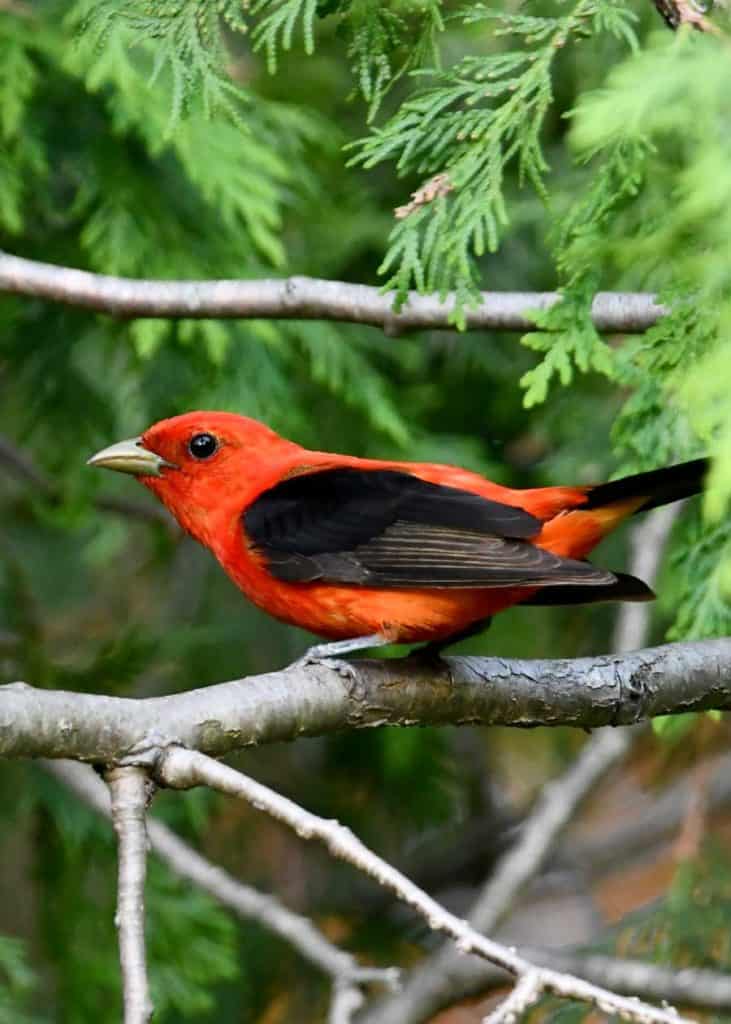
Keep reading: Do Hornets Make Honey?
So, what eats hornets? Like most other insects, hornets are subject to predation from a surprisingly extensive range of species, from the clever scarlet tanager to the invasive satellite fly.
While attracting insectivorous birds to your property can help keep hornet populations under control, it is by no means the proper way to handle a nest, especially if someone in your home has an allergy to the venom.
Instead, steer clear of the nest to avoid attracting attention and work with a professional to remove the hornet habitat from your home or yard.
More reading: 12 Animals that Eat Crickets
Your Turn
Have you seen these hornet predators before? Have a predator that eats hornets to add to the list? Please share it below!
- About the Author
- Latest Posts
Bryan Haines is a co-founder and writer at The Buginator. And is working to make it the best resource for taking back the outdoors from biting, stinging pests.
He also blogs about travel at Storyteller.Travel and photography at Storyteller Tech. Bryan is a partner at Storyteller Media, a publishing company he runs with his wife, Dena.

mr. moore
Friday 21st of July 2023
could scarlet tanagers,purple martins,orcaracara birds be brought to europe and the uk to eat asian hornets to naturally protect honey bee colonies for beekeepers.